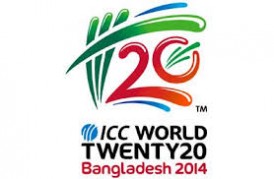What went wrong for Australia at the 2014 T20 World Cup?
Marco Trevisiol |
Leading into this year’s T20 World Cup, Australia had a remarkable 6 months. The turmoil and failures of early and mid 2013 were turned around to glorious triumph in 2013/14. In all formats of the game, Australia reigned supreme against England and South Africa.
After these triumphs, the T20 World Cup seemed to be the perfect icing on the cake of this season. For multiple reasons pre-tournament they were picked by many as the favourites. Firstly, they’d had a great run of T20 form leading into the tournament, winning 5 consecutive matches. In their coach Darren Lehmann they had the sort of leader whose laidback and positive approach seemed perfectly suited to the format. Their squad was imposing, especially in its batting with some of the most intimidating batsmen around throughout their lineup.
The loss through injury pre-tournament of star paceman Mitchell Johnson was a significant blow, but it was still perceived that such was the strength of their lineup (particularly in their batting) that Australia’s inaugural World Cup T20 win was just around the corner.
Alas, nothing went to plan. So disappointing were Australia that they were already out of the running for semi-final qualification with two of their four group matches to be played. They finished a dismal fourth out of five teams in their group, with a win in their final match against Bangladesh ensuring they didn’t suffer the humiliation of finishing at the bottom of the ladder.
The basic question is: why did Australia underachieve so much in this tournament? There are both specific and general reasons.
With regards to specific reasons, that probably comes down a pivotal moment in Australia’s opening match against Pakistan
Batting first, Pakistan were 2/55 after 7.5 overs. Australia had been in control until this over, than Umar Akmal pulled a short delivery to deep square leg where Brad Hogg dropped what was a very gettable catch.
This event had three negative consequences for Australia. Firstly, it triggered a complete collapse in the standard of bowling and fielding amongst the Australian team for the rest of the innings, unlike anything that had been seen in the Lehmann era. Secondly, it enabled Umar Akmal to score a career-best 94 off 54 deliveries, effectively the difference between the two sides. And thirdly, it seemed to shatter the self-belief of the usually brash and confident Hogg. He came onto bowl immediately after the drop and bowled one of his worst ever spells for Oz, conceding 29 runs off 3 wicketless overs. So badly did he bowl that – despite being seen as a key player pre-tournament – he wasn’t picked again.
On a more general level, a reason for Australia’s failure in this series was that one of the key strengths – their explosive batting lineup – became one of their weaknesses. Perhaps in a way there was too much firepower in the batting order as an attitude seemed to permeate from the individual batsman that ‘I can just go out and attack from ball one because we have so much aggressive talent, someone else will do the hard yards.’ This was especially true in the Pakistan run-chase where they recklessly lost two key batsman in the opening over. Instead of calmness from their batsmen, there seemed to be a frenetic undercurrent of overaggression that. Highly touted openers David Warner and Aaron Finch both had disappointing tournaments and it was notable that when they played with a bit more patience against Bangladesh, they produced their only significant partnership.
Australia badly missed Michael Hussey in this tournament, someone not only capable of big hitting (as he famously did against Pakistan in the 2010 WC T20 semi-final) but also able to be watchful when required and provide stability on which the team innings can be built on. Even someone like Glenn Maxwell who played some excellent aggressive innings lacked the sense of authority that he would see his side home to a successful target chase.
This all-aggression batting lineup came totally unstuck in their match against India where they were chasing a gettable total. No one had the confidence or patience to be prepared to be the one to build an innings; instead there was an endless procession of Australian batsmen caught in the deep after desperately hitting out and the end result was one of Australia’s lowest-ever T20 totals.
While the bowling was also disappointing, it was understandable after the loss of pace spearhead Mitchell Johnson just before the tournament started. Doug Bollinger as his replacement seemed a strange choice considering his modest Big Bash League performance, being a liability in the field and a bunny with the bat. While he performed decently (probably the best of a disappointing pace attack), he lacked the impact of Johnson.
But where Australia seemed to miss out was in the spin department, where there was much less faith shown in them than the pace attack. Hogg was discarded after one match and in the following match against West Indies, young leg-spinner James Muirhead was impressive in conceding just 21 runs off 3 overs plus a wicket. Yet in the closing overs, captain George Bailey wasn’t prepared to give him a final over and went to pace, with disastrous results as Australia threw away a game they should’ve won. In a format which has consistently shown spinners to be matchwinners, Australia seem unwilling to learn this lesson.
Perhaps most disappointing of all was the fielding. Even in weaker sides of recent decades, Australia’s catching and ground fielding could usually be counted upon to be of a high standard but no so this tournament. This was probably because Australia had too old a side for this format, with ultra-veterans Brad Hodge and Brad Hogg showing their age in the field, with Bollinger also a weakness. Most significant of all was that keeper Brad Haddin – after a largely flawless Ashes display – seemed weary after a long season and made numerous errors with the gloves. With even outstanding fielders like Dave Warner making mistakes, it all added up to a disappointing fielding performance.
Overall, this would go down as one of Australia’s most disappointing performances in a World Cup. For them to finally break through for a World T20 title, they’ll need not only the right personnel but better tactics when the next tournament is held.





Too many Victorians, something the article disappointingly skirts around :p
Comment by Furball | 12:00am BST 9 April 2014
1. Starc (best white ball bowler in the world) bowling crap
2. Can’t play spin
3. Too many Brads
4. Lack of Nathan Lyon
In those conditions and with the team they had, I don’t think they underperformed that much, they were never that good to begin with. If all the pitches were roads they would’ve definitely done a whole lot better.
Comment by Daemon | 12:00am BST 10 April 2014
It’s the nature of the beast, T20 is like that. They needed 31 in 18 with 6 wickets in hand vs Pak; and the game vs WI could also have gone either way. They had one poor game against the team that was undefeated till the final. No need to over-analyse IMO.
Comment by Jassy | 12:00am BST 10 April 2014
It’s no coincidence that the teams who rely the most on their seam bowling (e.g. Australia, New Zealand, England) performed poorly, while the spin heavy teams (e.g. India, Sri Lanka) did well.
If you want to be a great team you need to be able to perform in all conditions. Australia need to develop some spin bowling talent and depth, as well as batsmen who can play spin.
Comment by BeeGee | 12:00am BST 10 April 2014